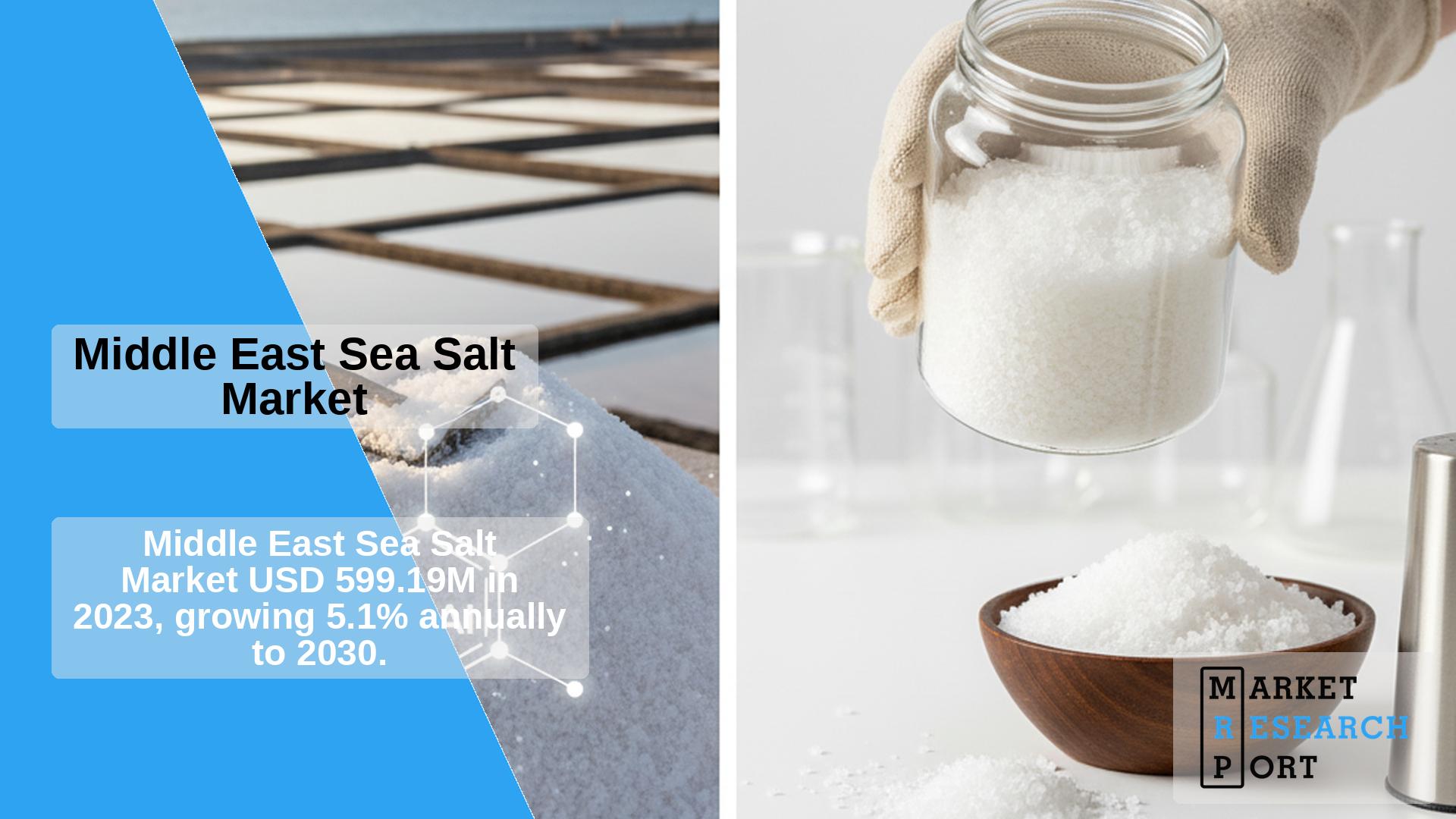
The Middle East sea salt market reached a value of USD 599.19 million in 2023 and is projected to expand at a CAGR of 5.1% through 2030. Demand is driven by the growing perception of sea salt as a healthier, less processed option containing essential minerals like magnesium and calcium, as well as a rising interest in natural and organic foods across the region.
This market is vital for food processing, chemical manufacturing, and water treatment across the Middle East. Sea salt, available as natural or processed product, is increasingly used as both a flavor enhancer and preservative in food as well as in the production of chemicals, pharmaceuticals, and cosmetic items.
Notably, Middle Eastern consumers are becoming more health- and quality-conscious, favoring unrefined, mineral-rich, and environmentally friendly products. The spread of e-commerce is allowing local producers to reach broader regional markets and higher-income segments interested in premium specialty salts.
Growth is supported by the region’s rapidly expanding food and beverage sector, a movement toward natural ingredients, and health trends. The increasing use of chlor-alkali products—such as caustic soda for industry and chlorine for water treatment and plastics—relies heavily on salt as an input. Large-scale urbanization and infrastructure projects in the Gulf have further bolstered demand, particularly for applications in PVC and construction chemicals.
Challenges remain due to growing competition from premium gourmet salts—such as Himalayan and specialty varieties—which capture health-driven and discerning consumers, creating pricing and market share pressure for mainstream sea salt brands in the Middle East.
The Middle East sea salt industry has a moderately consolidated competitive landscape, with leading companies including Cargill, Amara Salt Factory, El Nasr Salines Co., SASA Saudi Salt, and Samasalt. These companies focus on expanding capacity and product portfolios, building strong distribution, and investing in innovation for a regional competitive edge. Recent capacity expansions—like QatarEnergy’s new plant—reflect local ambitions for self-sufficiency and export capability within the Middle East region.
Refined sea salt constituted 74.34% of the regional market revenue in 2023 and is widely preferred for both food and industrial applications. Consistency, purity, and added nutrients (like iodine in table salt) drive use in food processing, restaurants, and home kitchens. Washed sea salt is popular as a finishing salt for regional cuisines, adding texture and gourmet value for both home cooks and chefs alike.
Egypt held the largest share at 39.91% of Middle East sea salt market revenues in 2023, driven by its robust chemical and petrochemical sectors. The country’s significant manufacturing and export capabilities help supply local and neighboring Middle Eastern countries.
Saudi Arabia is a key growth market, leveraging its leadership in desalinated water and government initiatives to utilize desalination plants for mineral extraction—including salt. The Saline Water Conversion Corporation has played a central role in increasing domestic production of sea salt.
Qatar is ramping up local production capacity through major plant investments—such as Qatar Energy’s new million-ton annual output project—to reduce import reliance and boost both industrial and table salt availability in the region.
| Report Attribute | Details |
| Market size value in 2024 | USD 627.91 million |
| Revenue forecast in 2030 | USD 845.92 million |
| Growth rate | CAGR of 5.1% from 2024 to 2030 |
| Historical data | 2018 – 2023 |
| Forecast period | 2024 – 2030 |
| Quantitative units | Volume in Kilotons; Revenue in USD million and CAGR from 2024 to 2030 |
| Report coverage | Revenue & volume forecast, company ranking, competitive landscape, growth factors, and trends |
| Segments covered | Application, country |
| Country scope | Oman, Saudi Arabia, UAE, Iran, Jordan, Egypt, Kuwait, Qatar |
| Key companies profiled | Cargill, Incorporated; Amra Salt Factory; El Nasr Salines Co.; Reefal for Salt; SASA SAUDI SALT; Riyadh Salt Industry Company; Samasalt; Blue Line Industries; Gulf Salt Co.; ShayanSalt Company; Shali Siwa Salt |